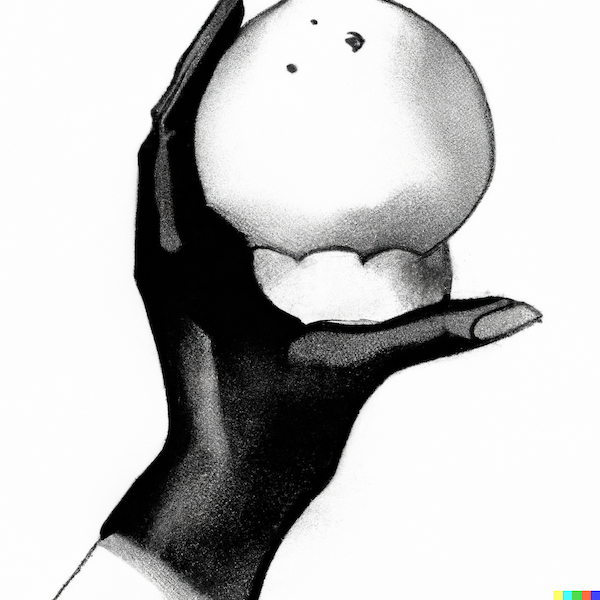Mailbag #76
/How about this idea?
You have the spectator write down the name of a dead guy.
And 4 living people.
They each go in a different envelope.
You then place a deck of cards on top of each envelope.
5 envelopes/5 decks of cards.
And then one of the decks cuts to a card.
And that is the deck that is on top of the envelope that contains the name of the dead guy.
In this case the idea of a Haunted Deck is implied rather than said out loud, which I think makes it spookier. —JM
It’s a good idea, but maybe too much stuff required, for my taste.
I’d get rid of the envelopes and get rid of all of the decks but one. Have your friend write down the name of one dead person and four living. (The dead one is marked in some manner.) They’re mixed up and laid out on the table name-side down. The deck is placed near one of the names, you turn your back to the set-up for a few moments and then turn back around… nothing has happened.
Then it’s moved to the next name. You turn around. Again, nothing happens.
This is building up anticipation. What is it, exactly, that you’re expecting to happen?
Of course, on the third or fourth try, when you turn back around, the deck is now cut to the spectator’s selected card. And when you turn over the name, it’s revealed to be the dead person.
This would use one of the remote controlled haunted decks. The nice thing about this is that it would get the spectator touching the deck and moving it from name to name. So they’d be handling the deck a fair number of times, but not doing anything that would be likely to expose the gimmick. They’d just be picking up the deck and moving it to the next person’s name.
You might want to ask if they have a relative who has passed who was a regular card player. That would make the idea that we’re manifesting their presence through a deck of cards make a little more sense because it’s something they used regularly when they were alive..
Of course, you’d want to be careful who you perform this for and in what situation. If your friend’s mom died last week you don’t want to be like, “Hey, she played cards a lot, right?”
But I don’t think most people would be bothered if you invoke a card-playing great-uncle they once had for the purposes of some mildly spooky entertainment. But if you think the person you’re with might be bothered by that, you could always ask them to look up the name of a famous dead gambler or magician or whatever. That could be the name that’s written down.
And I wouldn’t frame it like a challenge, e.g., “I’m going to determine which one is the dead person!” Or even, “The deck of cards will determine which name is the dead person.” I would just suggest the other names are a way of making this ritual or this test/experiment extra fair. It lets us know we’re really making a spirit connection with the person we’re hoping to. Or something like that.
The original idea would work well in a more formal show. But for hanging out with a few friends, the multiple decks and envelopes might be too much.
I really enjoyed your blog on Iteration Testing Peek Wallets. Your observation that wallets are not something people tend to consider as gimmicked is validating of something I've long believed.
[…]
I'm curious, have you found books to elicit suspicion of gimmicking? In a context where they belong my guess is, like wallets, they are less likely to raise suspicion than the other items that you mentioned. —BC
Unfortunately, a good number of people do intuitively guess the idea of a specially printed book. We’ve only tested book tests a couple of times, that I remember. And only once since we really nailed down our testing protocols. And while, “gimmicked book” was not the sort of thing that was suggested as frequently as “trick cards” for a card trick, it was something that was suggested with some regularity. (Of course they didn’t say, “gimmicked book.” They would just suggest there was maybe something unusual about the book.)
Obviously which book you’re using in your effect is going to make a difference with how suspect it is. Harry Potter will garner less suspicion, but it’s not completely above doubt. People “get” the idea of a specially printed book in a way they don’t get the concept of a specially constructed wallet. So you can’t just rely on them saying, “Oh, Harry Potter, I’ve heard of that. I’m sure it’s just a normal book.”
But at the same time you’re definitely better off using a book they’ve heard of rather than something like this goofball stuff.
As I once wrote about these books from the Flashback book test…
"Now I'm sure this trick is very clever and I'm sure a lot of thought went into it. Unfortunately though, you're expected to convince people you have psychic power by using the most totally bogus looking book I've ever seen. Check out the cover for "Band of Brokers," have you ever seen anything so completely shady in your life? That picture looks like it belongs on the cover of the "3M Corporation's Guide to Team Building and Diversity Training," or in an ad for an insurance company, "Our agents are waiting to handle your claim." The one thing it doesn't look like is the cover of any legitimate book published in the history of book publishing. "Stained Justice" is pretty shoddy as well. But "Band of Brokers" is so obviously phony it's amazing. That thing couldn't look more suspect if it had a bright pink cover and was titled ‘Gimmicked Magic Book’ by Fakey Authorton."
Help A Father Out
I received an email from supporter and new father, PG who asks:
So now in my new house I have space to practice magic, but with my new baby I have no time! I used to sit in front of the TV and practice getting into lateral palm or perpendicular control, or semi-relatedly on your advice the Giraffe switch. Now there's always a baby in at least one hand. Did I buy a used Rene Lavand book on Ebay? Yes! Do I have any time to read it? Definitely not.
What advice do you or your readers have for continuing to practice magic while juggling a tiny human?
Personally I have no advice, because I’ve successfully navigated through life without leaving any “little humans” in my wake. (As far as I know.)
So I’m asking any of the parents out there if they have any advice for this situation. It’s too late for my advice (pull out) but maybe some of you have some words of wisdom for a new dad on how to devote some time to his hobbies while not ignoring the kid. If so, send it to me and I’ll pass it along.
Help a Brother Out
This weekend I’ll be staying with some friends at a place that has a pool table. Do you have any pool table-based stunts, tricks, or bets that you’d recommend? If so, send me an email and let me know. Thanks!
























